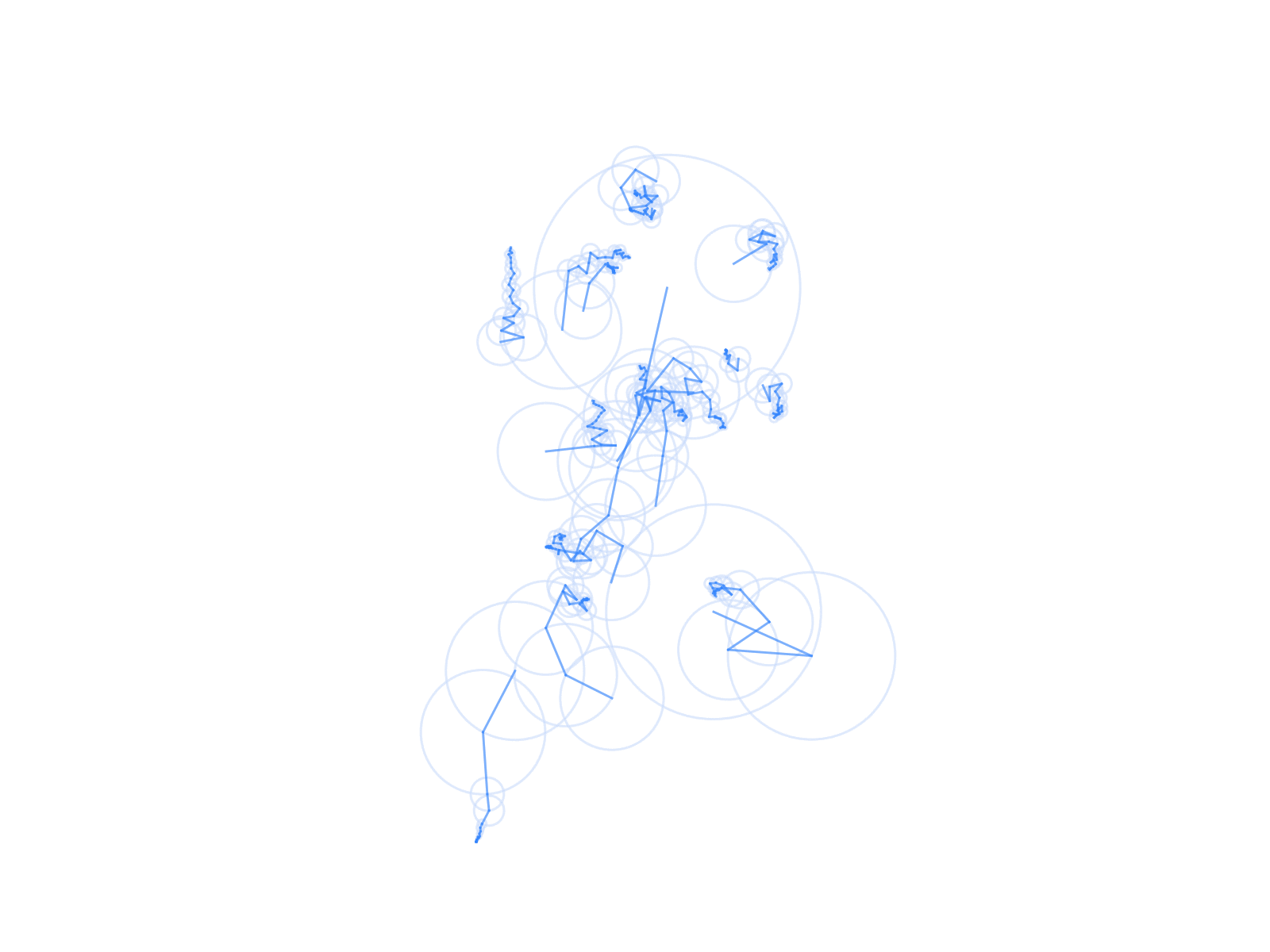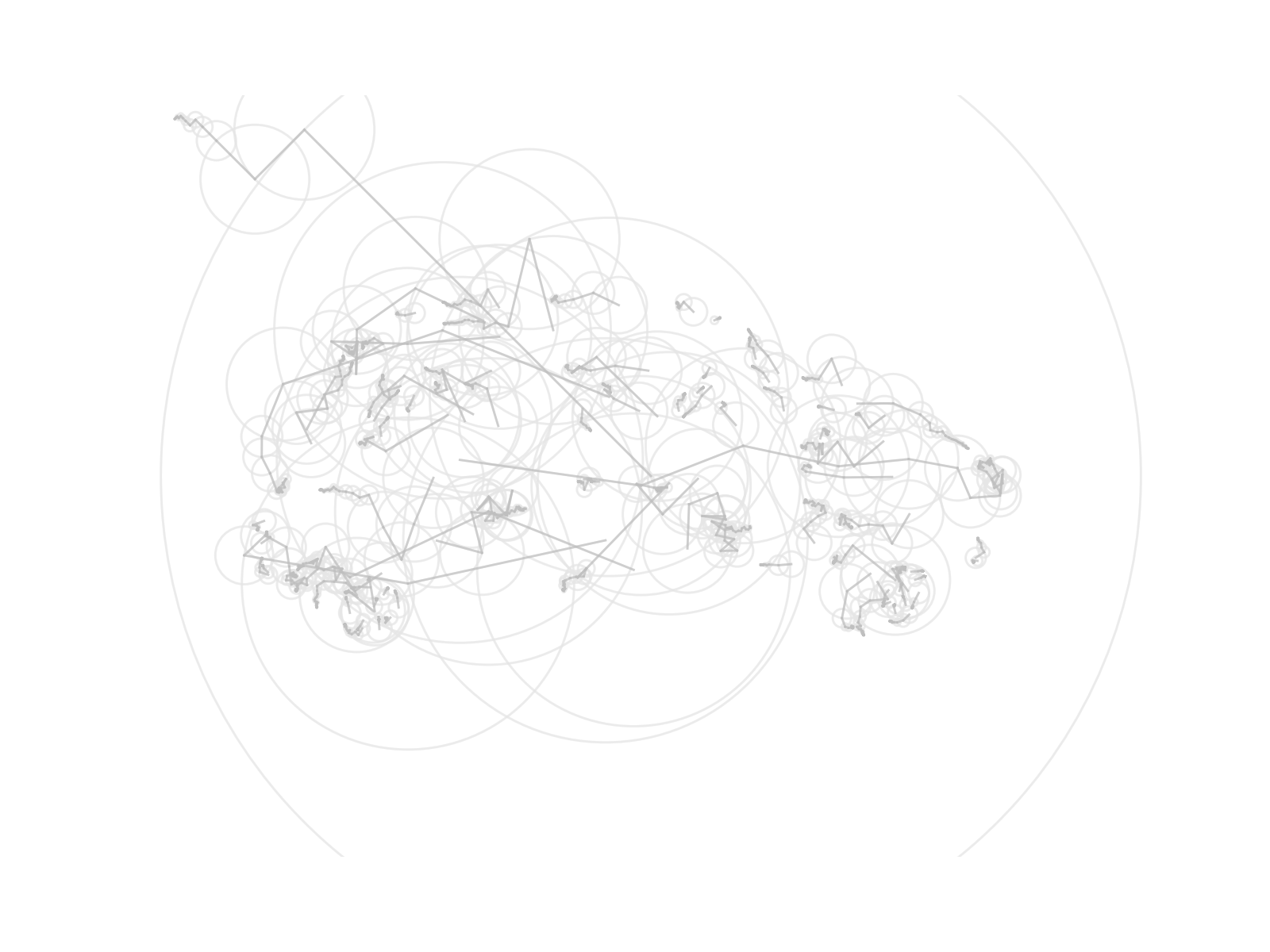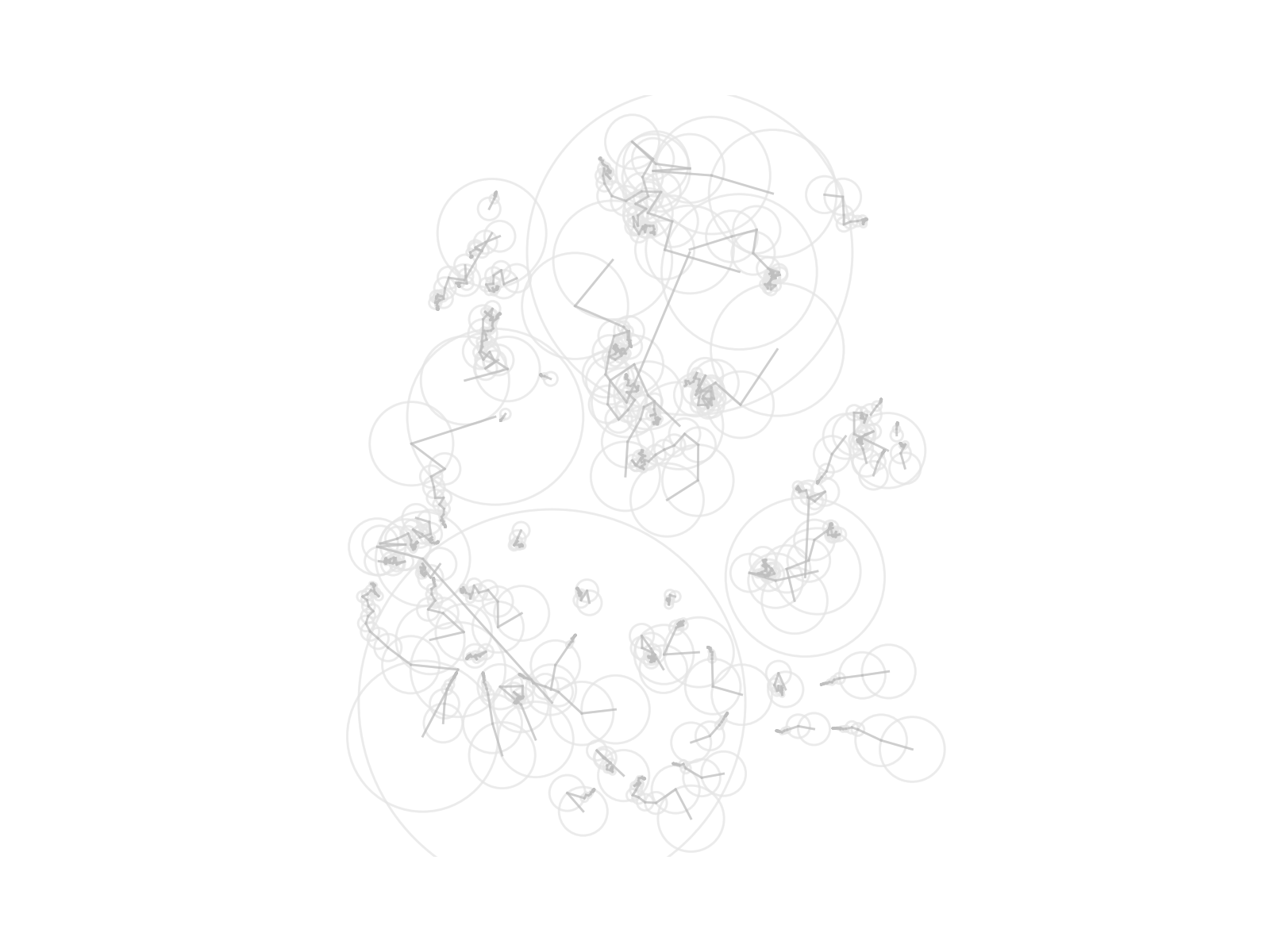Epicyclificator
Date: 2019-06-15Author: Diego Plascencia-Vega
Background
Many articles, blog posts and videos have described the process by which arbitrary closed curve shapes can be approximated by epicycle trajectories. Mathologer [1] walks through an example of how to extract points from a rasterized image and approximate the shape in the image using epicycle trajectories. GoldPlatedGoof [2] walks through a similar process in his video, but starts with a vectorized image in .svg format. Both create these epicycle animations in Mathematica.
In this article I will explain the theory behind how this is done, and show some animations produced by the epicyclificator.
Theory
We can describe motion around a circle using the following equation. \[E(t)=(a+bi)e^{nit}\] Where \((a+bi)\) defines the diameter of the circular motion and where on the circle the cycle starts. \(n\) defines how long it takes the cycle to complete, and which direction the cycle turns.
An epicycle trajecotry can be defined using a series of nested cycles with \(n=-N,...,-1,0,1,...,N\). We will see later why this is a convenient series of \(n\) to choose. The trajectory of the epicycle is defined by the following equation: \[P(t)=\sum_{n=-N}^{N}(a_n+b_ni)e^{nit}=\sum_{n=-N}^{N}C_ne^{nit}\]
To find \(C_n\) we multiply both sides times \(e^{-int}\) resulting in: \[P(t)e^{-nit}=...+C_{n-1}e^{(n-1)it}e^{-nit}+C_ne^{nit}e^{-nit}+C_{n+1}e^{(n+1)it}e^{-nit}+...\] \[P(t)e^{-nit}=...+C_{n-1}e^{-it}+C_n+C_{n+1}e^{it}+...\]
We take the integral of this expression from \(0\) to \(2\pi\). \[\int\limits_0^{2\pi}P(t)e^{-nit}=...+\int\limits_0^{2\pi}C_{n-1}e^{-it}dt+\int\limits_0^{2\pi}C_ndt+\int\limits_0^{2\pi}C_{n+1}e^{it}dt+...\]For each epicycle, we can use the following property of epicycles: \[\int\limits_0^{2\pi}e^{nit}dt=0\]
Which makes all of the terms on the right zero except for \(C_n\). This simplifies our expression: \[\int\limits_0^{2\pi}P(t)e^{-nit}=C_n2\pi\] \[\frac{1}{2\pi}\int\limits_0^{2\pi}P(t)e^{-nit}=C_n\]
We can use the above expression to find all \(C_n\) terms that make up the epicycle approximating the closed curve of interest.
Epicyclificator
The goal of this python script will be to input an .svg file and produce a .gif file with an epicycle animation approximating each closed curve in the .svg file. For fun, we will preserve the color of the original curve in the .svg file in the animation.
The script can be found here: make_epicycles.py
Use
python epicyclificator.py path/to/file.svg --n number_of_cycles_per_epicycle
| Parameter | Type | Description |
|---|---|---|
filename |
str | Path to .svg file containing paths to approximate via epicycles. |
--n |
int | Number of epicycles to use in shape approximation. |
--gif_filename |
str | If this parameter is set, the animation will be output in .gif file of this name. |
--csv_filename |
str | If this parameter is set, the list of Cn values will be output in .csv file of this name. |
--color_theme |
str | If this parameter is set to 'electric_blue' the animation colors will be overriden to shades of blue. |
Results



References
- [1] Epicycles, complex Fourier series and Homer Simpson's orbit - Mathologer
- [2] Fourier Analysis For The Rest Of Us - GoldPlatedGoof
- [3] Svgpathtools - Mathandy
- [4] SVG Tutorials